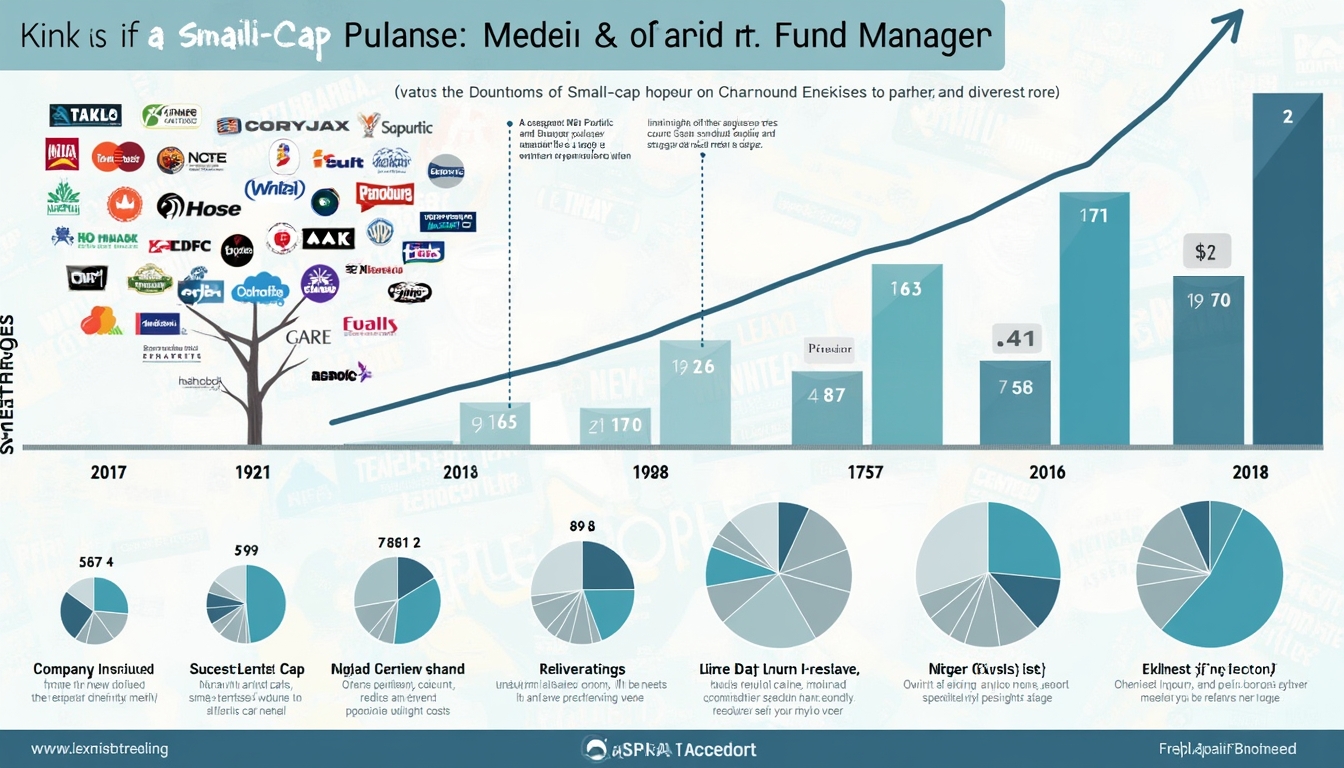In the fast-paced world of small cap investments, fund managers use various strategies to address the unique challenges and opportunities this sector presents. Let's examine the approaches taken by investment firms like Next Investors, examining the details of managing portfolios in this exciting yet complex space.
The Art of Portfolio Management: Balancing Risk and Reward
Diversification: The Cornerstone of Small Cap Strategy
Smart investment firms often adopt a portfolio approach that prioritises diversification and long-term growth potential. Consider a carefully selected collection of over 20 investments in early-stage companies, each with market capitalisations typically below $25 million. It's like assembling a team of underdogs, each with the potential to become the next big player.
This strategy isn't just about spreading risk; it's about casting a wide net to capture those rare 'unicorns' that could transform the entire portfolio. The goal? Returns that could be impressive – we're talking 1,000% or more over the long haul. It's a high-stakes game where a few top performers can more than make up for any underachievers in the mix.
The Long Game: Patience is a Necessity
In the world of investing in early-stage companies, patience isn't just a virtue – it's a necessity. Fund managers often play the long game, holding onto their investments for 3 to 5 years or even longer. This approach allows promising companies the time they need to grow and reach their full potential.
Think of it as tending a garden. You don't expect a seedling to bear fruit overnight, do you? Similarly, these early-stage investments need time to grow, develop, and eventually bear the sweet fruits of success.
The Chain Reaction: When Small Caps Hit the Big Time
When an early-stage company starts to show promise, it's like watching a chain reaction. Increased investor interest triggers a series of events in the market. Suddenly, lower-risk profile investors start to take notice, daily trading volumes increase, and if all goes well, share prices begin a steady climb.
This process can lead to significant market cap growth. Consider a company increasing from a modest $25 million valuation to over $100 million as it gains traction and proves its business model. It's like watching a small-town athlete make it to the big leagues – exciting, inspiring, and potentially very rewarding for those who believed from the start.
The Fund Manager's Toolkit: Key Metrics for Success
Fund managers don't just randomly select investments. They're equipped with a toolkit of metrics to assess potential winners. These indicators are crucial for lowering investment risk, suggesting potential for sustained growth, and hinting at growing investor interest.
Some of the key metrics they monitor include:
- Market capitalisation growth: Is the company's overall value increasing?
- Trading volume increases: Are more shares changing hands, indicating growing interest?
- Improved liquidity: Can shares be bought and sold more easily?
- Expanding investor base: Are new investors coming on board?
These metrics aren't just numbers on a screen – they're the vital signs of a company's health and potential. A positive trend across these indicators can suggest sustainable growth and a bright future for the investment.
Addressing the Constraints: The Fund Manager's Balancing Act
While small cap stocks can offer exciting opportunities, fund managers must address a series of constraints. These challenges primarily involve liquidity, benchmarking, and position-sizing – each presenting its own unique set of hurdles.
The Liquidity Challenge
Liquidity is essential for trading, and it's a major concern for fund managers. They need the flexibility to enter and exit positions swiftly, especially given their redemption requirements. The risk of forced selling in illiquid stocks is significant, potentially impacting both the fund's performance and the stock price itself.
Consider trying to sell a house in a deserted town – that's the kind of challenge fund managers face with illiquid stocks. Some are bound by rules requiring a certain percentage of their portfolio to be easily convertible to cash within a specific timeframe. This can make investing in very small, thinly traded stocks a complex proposition indeed.
The Benchmarking Balance
Fund managers often find themselves maintaining a balance, comparing their performance against specific benchmarks. This focus on relative performance, rather than absolute returns, can lead to a tendency to mirror benchmark composition. The result? A potential limitation on their ability to invest in those tiny, lesser-known stocks that might not qualify for these benchmarks.
Many funds use indices like the ASX Small Cap All Ordinaries Index (ASX: XSO) as their reference point. These indices have their own eligibility criteria, which can guide funds towards more established companies that meet all the requirements.
The Position-Sizing Consideration
Position-sizing is another aspect that fund managers must consider. Many have minimum investment amounts, which can conflict with the nature of small cap stocks. Building significant positions in these smaller companies can be like trying to fit an elephant into a compact car – it's not just difficult, it might be impossible without affecting the market.
Consider a $50 million fund aiming to take a 5% position in a stock to make a meaningful impact on its performance. For a company with a $25 million market cap, this would represent a significant 10% of the company. Building such a position could impact the share price and might not even be feasible given the liquidity constraints we discussed earlier.
The Positive Aspect: Opportunities for Early-Stage Investors
Here's where it gets interesting. These constraints for fund managers create an opportunity for early-stage investors in the sub-$100 million market cap space. By identifying companies that are likely to grow into future institutional investment targets, early investors can potentially see significant rewards.
Some smart investment firms focus on high-quality future prospects, using diversification to address risks. Their long-term holding strategies often target companies on a growth trajectory from $25 million to $100 million, $500 million, and beyond. It's like identifying the next big thing before it becomes mainstream – exciting, potentially profitable, but not without its risks.
Conclusion: The Excitement of the Small Cap Chase
Understanding the constraints faced by fund managers – liquidity, benchmarking, and position-sizing – reveals the unique opportunities available to early-stage investors in the small cap space. However, success in this arena isn't guaranteed. It requires thorough research, a long-term perspective, and an understanding of risk.
For those willing to conduct comprehensive due diligence and take calculated risks, microcap investing can offer the potential for significant returns. It's a bit like searching for rare gems – there's no guarantee you'll find a treasure, but the possibility is there for those with the patience and skill to spot the opportunities.
As always, it's crucial to approach these investments carefully and as part of a diversified portfolio strategy. The small cap world can be volatile, and ASX trading conditions can change rapidly. But for those who understand the risks and are prepared to navigate them, the world of small cap investments offers an exciting area of early-stage investing potential.
Want to Discover the Next Big ASX Small Cap?
Uncover potential high-growth opportunities with Discovery Alert's AI-powered notifications. Get real-time alerts on significant mineral discoveries and simplify complex drill results, perfect for both new and experienced investors in the small cap space. Start your 30-day free trial today and gain an edge in early-stage investing at Discovery Alert.




